Annual flowers are more popular with bees than scientists realized
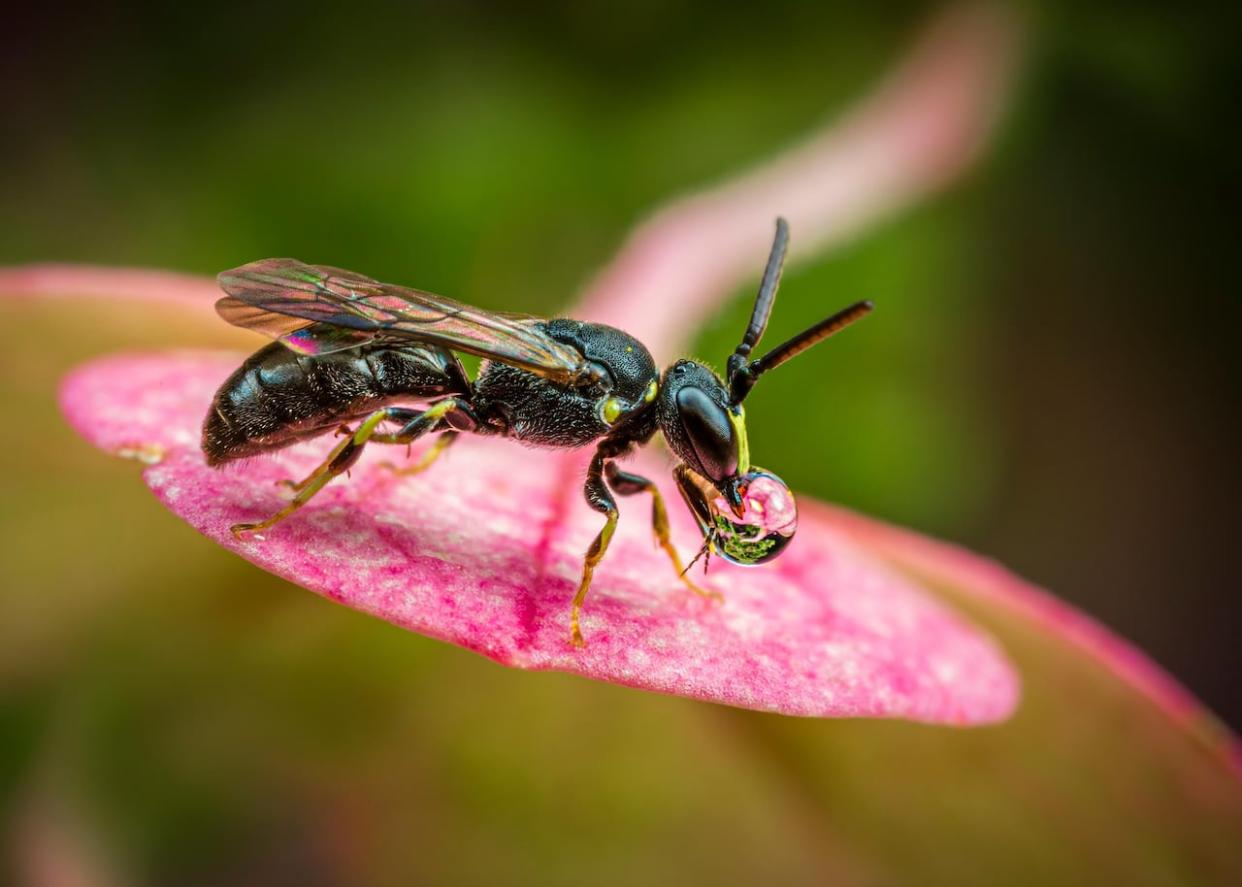
Flowers that you have to replant each year are some of the most popular. You'll find pansies and petunias in hanging pots along busy roads, filling public garden beds in parks and outside gardeners' homes.
They're beloved because they're so beautiful, with full, colourful petals — and they can stay that beautiful the entire season, so a gardener knows what their space will look like from May until October.
Despite all the diversity in colour and species, entomologist David Smitley from Michigan State University says annual flowers are thought of as a "pollinator desert."
Bees don't visit them for their nectar and pollen as often as they frequent perennial flowers like black-eyed Susans (Rudbeckia fulgida). That's a problem, because pollinators allow plants to thrive and play a critical role in the ecosystem we all depend on.
But according to Smitley's research published today in the Journal of Economic Entomology, some annual varietals, like the Cocktail Brandy begonia, might be more popular among pollinators than scientists realized.
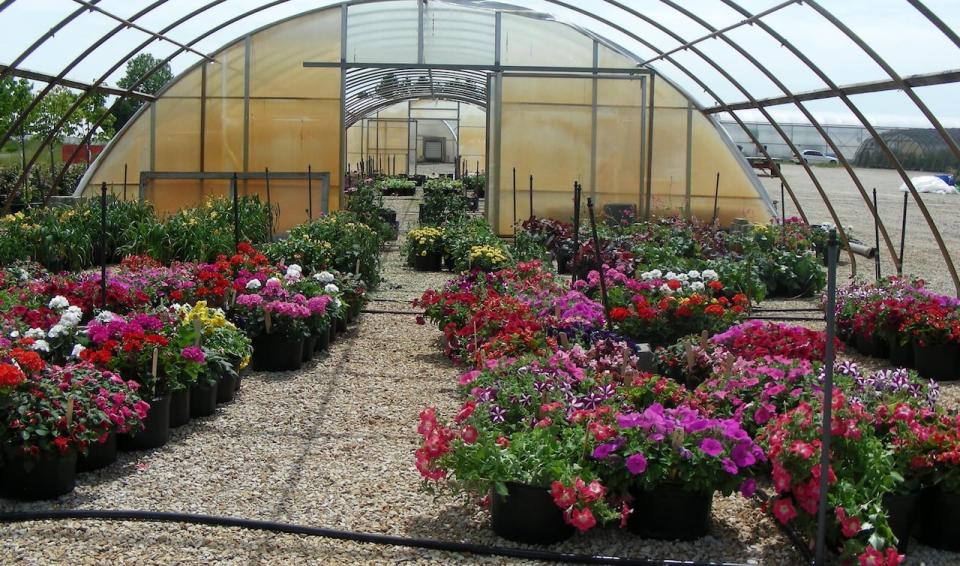
Mixed groups of the flowers grow at the Michigan State University Horticulture Farm in June 2017. The study observed the visitation habits of pollinators for 25 different varieties of six popular annual flower species. (Michigan State University)
Eco-conscious Canadians who want to plant annual flowers in their garden don't need to go cold turkey; instead, Smitley said he hopes people will make a small change by choosing annual varietals that will feed the bees and their other local pollinators.
But finding those varietals may prove to be a challenge.
Why pollinators are a priority
Pollinators are important to our ecosystem because they let "plants have sex," says Jason Gibbs, an entomologist at the University of Manitoba who helped to identify the pollinators that visited Smitley's annuals.
"Plants being able to reproduce is the foundation of basically all terrestrial ecosystems," Gibbs said.
Plants absorb energy from the sun, then are eaten by the earth's creatures, which in turn are eaten by bigger creatures and so on. None of that could happen without pollinators.
This cycle works great if everything is in abundance, but there has beengrowing concern about the decline of wild bees (those that aren't managed by beekeepers) in Canada, due a range of factors, including habitat loss from climate change and agricultural land use practices.
Though Gibbs says we're "in the dark about how well" 90 per cent of the roughly 900 native bee species are doing, there are some species that are known to be in decline, or have gone missing entirely.
"The classic case in Ontario is the rusty-patched bumblebee, Bombus affinis," Gibbs said. "Which I don't think anyone's actually seen for a decade or more."
Without pollinators, crops will yield less, trees and bushes can't grow and biodiversity (and all plant health, by extension) will suffer.
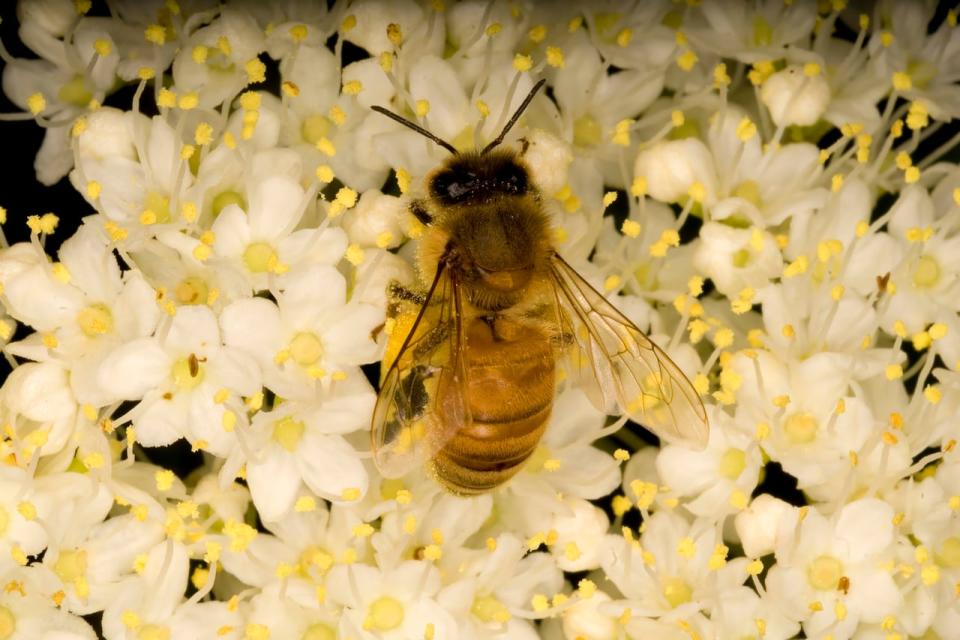
A bee on a flower in Montreal, close up. (Daniel Thomas/CBC/Radio-Canada)
Pollinators are smart. They assess how much nectar and pollen a flowering plant provides and will remember the good and the bad flowers alike. That's why it's so important that the flowers they can reach are full of pollen and nectar.
"The classic example I always think of is a wild rose," Gibbs said. Wild roses have loose petals and the pollen is clearly visible. Cultivated roses are so full of petals that none of the valuable resources are visible to a pollinator.
Alan Sullivan, an adjunct professor in the department of plant agriculture at the University of Guelph, has made it part of his life's work to breed flowers. He explained that "prioritizing" long-lasting and colourful flowers through breeding can take resources like sugar away from parts of the plant meant for pollinators, like the flower's nectaries.
Annuals that attract pollinators
The pollinator study evaluated six species of annual flowers that made up 46.6 per cent of garden centre flower sales in the U.S.: petunias, impatiens, begonias, geraniums, pansies and New Guinea impatiens. There were three to six varietals of each species.
The varietals in the study that were most highly visited by pollinators could compare to marigolds — usually considered reasonably popular with pollinators — Smitley said.
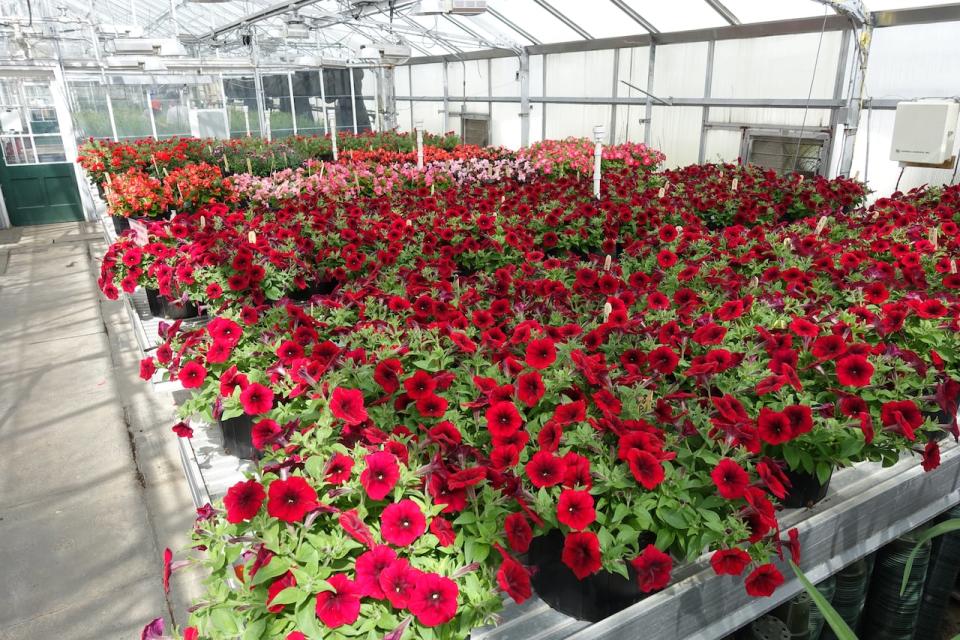
The flowers used in the pollinator trial being grown in a greenhouse in this undated photo. (Submitted by Cathy Whitman)
The top four were the begonia varietals called Cocktail Brandy and Ambassador Rose Blush, and the impatiens varieties called Accent Coral and Super Elfin XP White. But even if gardeners know the best varietals, Smitley said that finding them in garden centres may be a problem.
He said the first thing to know is the correct name; each flower has a common name, a scientific name, and a varietal's name, such as marigold (Tagetes patula) Alumia Vanilla Cream. Smitley also suggested familiarizing yourself with the brand that owns the varietal and even bringing home a few different varietals to see which ones your local pollinators prefer.
Smitley said breeders could make this all easier for consumers if they documented a varietal's attractiveness to pollinators and made that part of the labelling. Part of his work was to show breeders how to record that information.
"It's not that difficult. Plant breeders collect all kinds of data," he said. "They've already found out that by marketing these annual flowers as being attracted to pollinators really increases sales."
Sullivan said that breeders could select for plants attractive to native pollinators, but he wasn't sure if they would, saying that it would be "very labour intensive" and "time consuming."
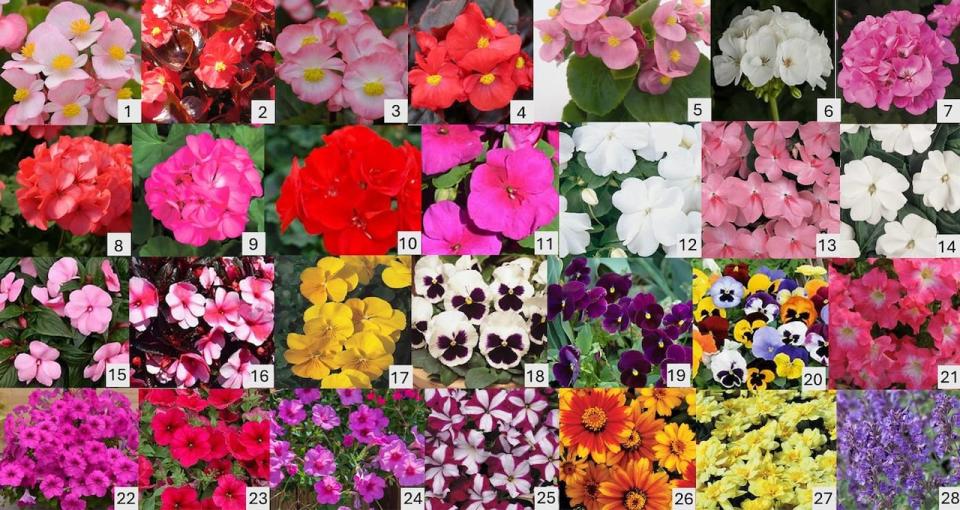
All the varieties of annual flowers studied by entomologist David Smitley and his team. The number corresponds to the name of the variety in the paper. The most popular with pollinators were the begonia varietals called Cocktail Brandy (1) and Ambassador Rose Blush (3) and the impatiens varietals called Accent Coral (13) and Super Elfin XP White (12). (David Smitley/Michigan State University)
Should you abandon annuals?
Though it identified that some annuals attract more pollinators than others, Smitley and his team's evaluation ultimately found that annual flowers were not a "a good choice for the purpose of attracting and supporting pollinators."
But Smitley said he's more interested in focusing on small improvements gardeners could make, not convincing them to abandon annuals.
"We know already that most people are not going to give up their annuals, because they just love them," Smitley said. "They're so beautiful, and we don't have anything as beautiful as they are that is also really attractive to pollinators."
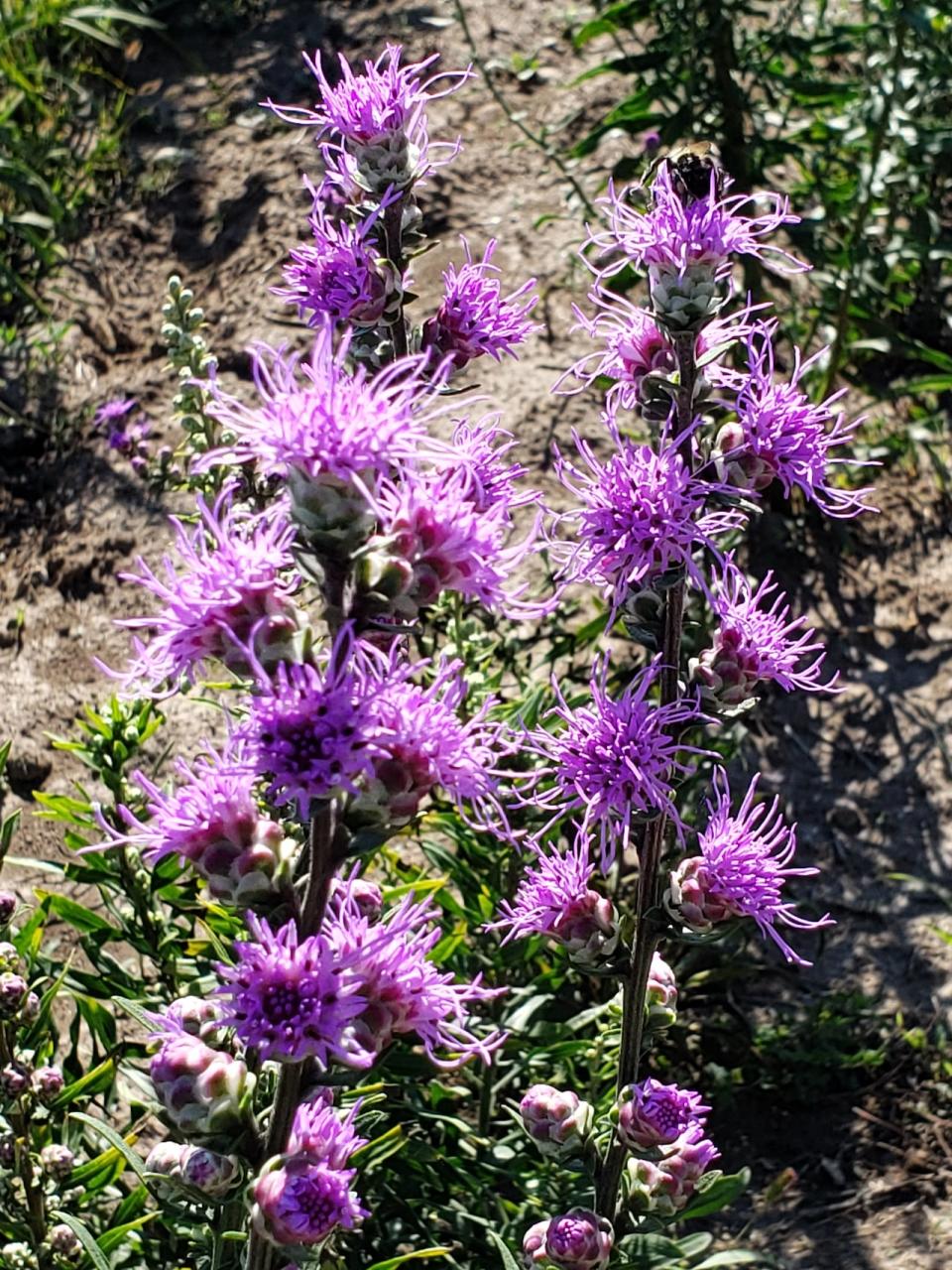
Liatris pycnostachya appears on a sunny day in this undated photo. Liatris is the favorite native plant of Alan Sullivan, an adjunct professor in the department of plant agriculture at the University of Guelph in Ontario. (Submitted by J. Alan Sullivan)
Sullivan agreed that annuals still have a role to play in the ecosystem.
"Studies have shown that they do provide a food source," he said. They can help "carry over" the pollinators during times when perennials are not flowering and, in urban areas, annual flowers are better than no flowers at all.
But he said other plants can be more valuable to pollinators. Native plants, which Sullivan studies, are useful because the native pollinators are familiar with them already.
Gibbs also emphasizedthe importance of native plants for the pollinators.
"My mantra is: native plants for native bees," Gibbs said. "That's the best thing that you can do, from a pollinator perspective, is plant native flowers."

